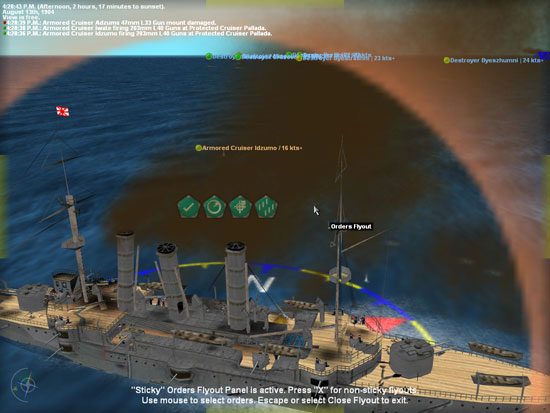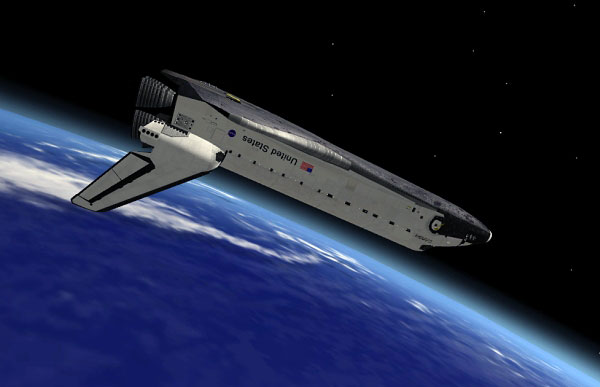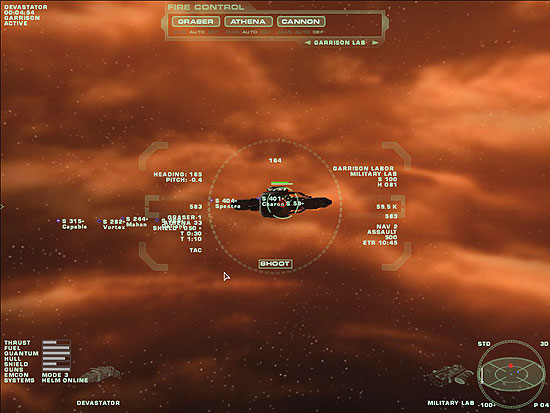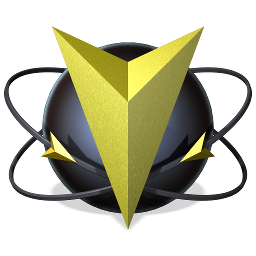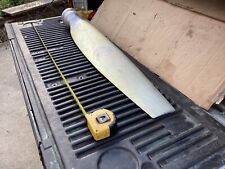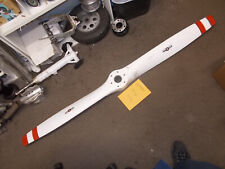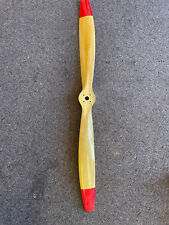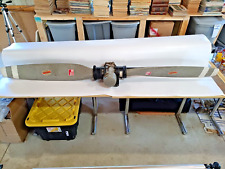Sid Meier’s Starship for iOS: space is flat!
I used to love the Civilization series of games from Sid Meier, on both PC and iOS, so I was really looking forward to this title.
If you don’t know the Civilisation series, they are turn-based ‘4X’ (eXplore, eXpand, eXploit, and eXterminate) strategy games which focus on different periods in human history.
Civilisation in Space?! Well, the standard Civilisation game takes place on the surface of planet earth, on a 2D map – but space is 3D, which will bring all sorts of new strategic and tactical considerations to the game, right?
Spoiler alert: nope.
GAME VERSION
I opted for the $15 USD iOS version of Starship for my tablet (no in-app purchases). It is definitely most suited to tablet, as a lack of depth and cool graphics has led some PC reviewers to rate the game poorly whereas mobile gaming sites are more enthusiastic. Both the iOS and PC versions of the game cost the same and judging by reviews, look and play the same.
The game was nicely bug free, but suffered from some really basic weapon balance issues, as you will see.
In terms of look and feel, if you are familiar with the Sid Meier Civilisation games, you will be right at home here – this is a straightforward port of Civilisation into a galactic realm.
GAMEPLAY
In addition to this review, I’ve written a ‘play through’ of a campaign, which you can read here, to get a good flavour of the gameplay.
The aim of the game is to achieve galactic domination against up to 6 AI players (no multiplayer – really? This is 2015 Sid), which you can achieve in several ways: domination (last one standing), population (>51% population), wonders (seven or more hi tech wonders), or science (3 level 6 technologies).
You do this by travelling the universe with your mighty starship fleet, conquering planets with trade or by force, completing missions to help the planetary leadership which will earn you resources and influence, and generally fending off enemy fleets trying to steal your confederates from under your watchful gaze.
As the game progresses, you will earn the resources needed to able to upgrade and expand your fleet, upgrade and expand your planets, and your technologies.
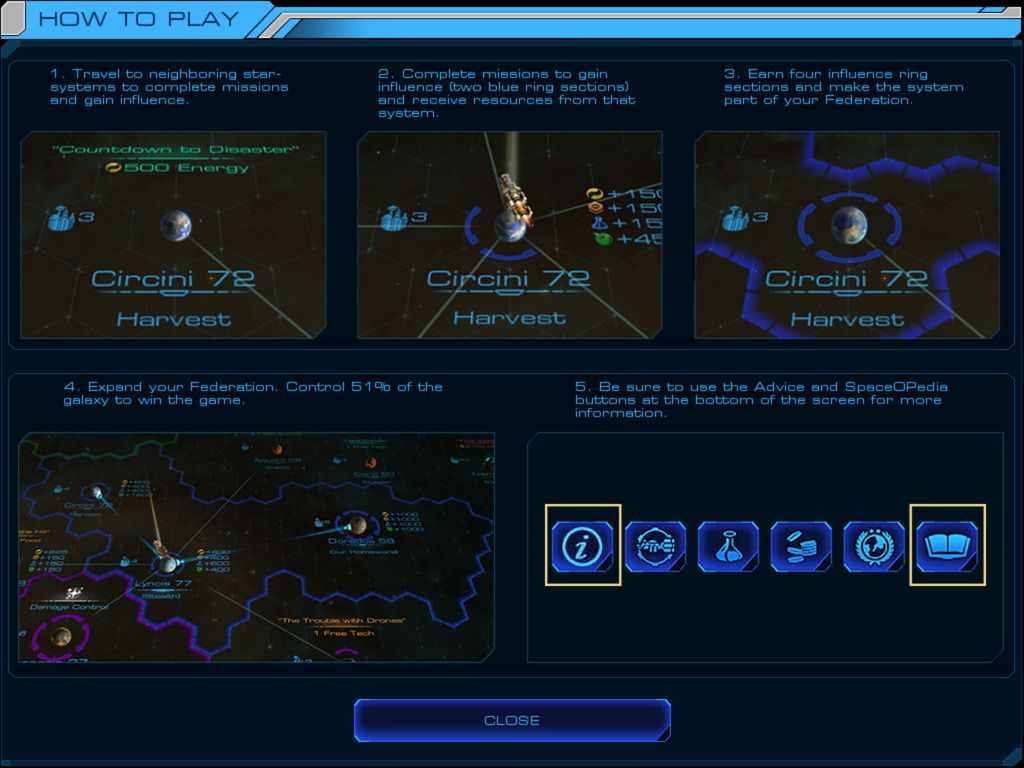
Your first job is to pick your race and here you have eight leaders with 3 ‘affinities’ or civilisation types to choose from.

Each leader brings special talents to the table – ‘Barre the Benevolent’ builds cities cheaply, so is a good choice if you are going for a population victory, while ‘Sochus the Progressive’ starts with two random tech upgrades, a good choice if you are going for a science victory. The affinity you choose also provides benefits. Supremacy races are high tech and start with one ‘Wonder’ already built, Harmony races get along well with everyone, so they get cheap Starship repairs, while Purity races make the most of their pure human nature to rip off their partners so they get double payment for every mission completed.
I liked having 24 combinations of leader and style to choose from, so first bonus points to Sid for that. Also, points for the fact that although there is no manual or tutorial missions, there is a ‘SpaceoPedia’ info system with the basics about the game ready at hand as you need it.
You choose your map size, number of opponents, difficulty level and the type of victory you want to play for, and then hit start!
This will take you to the strategic map, where you see your Homeworld, its connections to other nearby planets and can get information about your world and your fleet. First disappointment is that the map is a simple 2D slice of space. (Sid baby, space is 3D! I don’t expect a hologram to appear over my tablet screen, but I do expect space to be a 3D space. Sid loses big points for that one.)
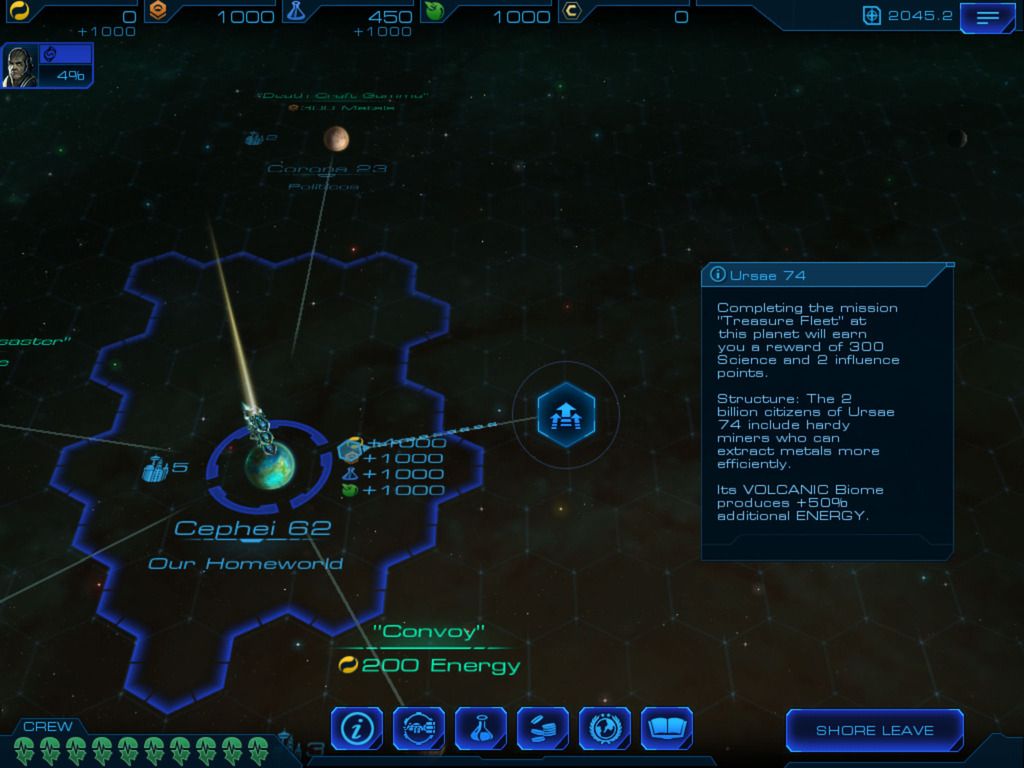
You will usually start with a small, insignificant fleet of just one or two starships, lightly armed, and lightly armoured.
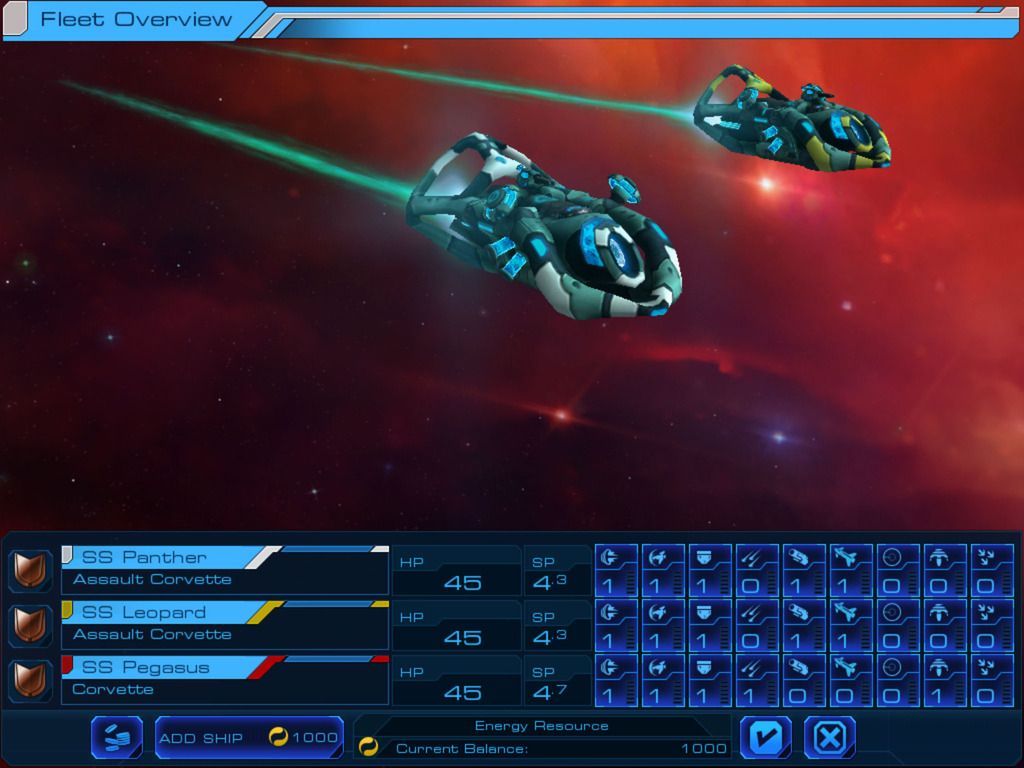
You also have limited resources to spend on upgrading them, which you can spend on engines, shields, armour, plasma cannons (close in weapons), laser cannons, torpedos, detector equipment, cloaking equipment or lightly armed fighter craft.
From little things, big things grow. You can upgrade your fleet from corvette to destroyer to assault cruiser, fast cruiser, battleship and finally fast battleship. And as you progress your crew will improve through the ranks from rookie to elite, gaining 10% efficiency every time ie more able to withstand fatigue, repair damage, operate weapons etc.

As you add to your fleet, upgrade the weapons etc and move your ship from a small corvette to kickbutt Battleship, you will see it grow in size and scariness. Or you would, except all the ships come in Lego colours and look kind of cute, rather than scary.
(Sid, this is what a scary gunned up Starship looks like. This one was not made by Lego.)

The mission types fall into a couple of simple categories; destroy this, escort that, defend this or just survive X number of turns. At least the briefings are nicely illustrated and in my first two games I did not come across any duplicated briefing screens. After a few campaigns though, you will find the choice of missions rather limiting.

All missions involve some type of combat, with your fleet taking on enemy pirates, automated defence systems, enemy fleets or rescue missions. Don’t expect Galaxy on Fire style first person or 3D action here either, Sid Meier sees his universe in 2D, for battles as well.
It has to be said, these battles are the most disappointing element of the game. At higher difficulty levels you do have to face a daunting number and ranking of enemies, but the battles are just turn-based maneouver and fire exercises: you start at long range with torpedoes and if that doesn’t do the job, send in your fighters and if that doesn’t do it, get in close with your capital ships and slug it out with kinetics and lasers.
The only subtleties are that you can use asteroids and planets for cover, and you and the enemy can employ cloaking, both of ships, and of torpedoes.
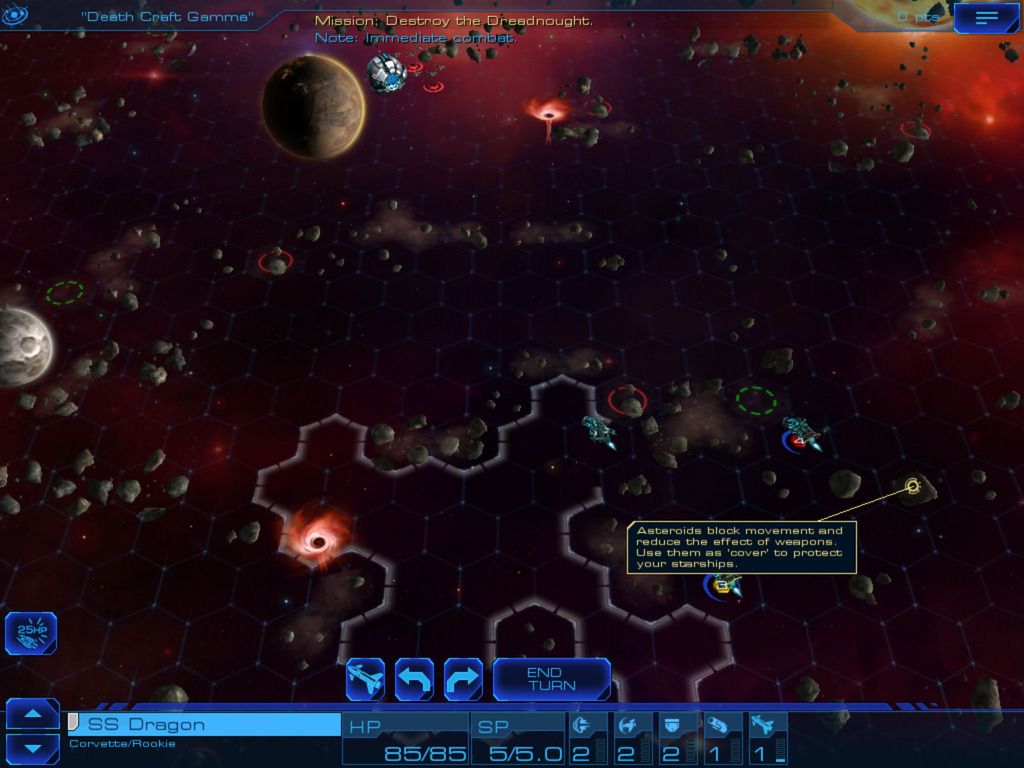
Our fleet closes on the Marauder (pirate) flagship. You can’t shoot through asteroids or planets (duh) and those little whirlpools are wormholes which zip you randomly from one side of the battlefield to another. Annoying when you forget they are there, useful if you need to make a quick getaway from an enemy torpedo.
When you get a hit on the enemy vessel, the action zooms into a closeup of the enemy vessel with a little bit of sparkly boom boom stuff.
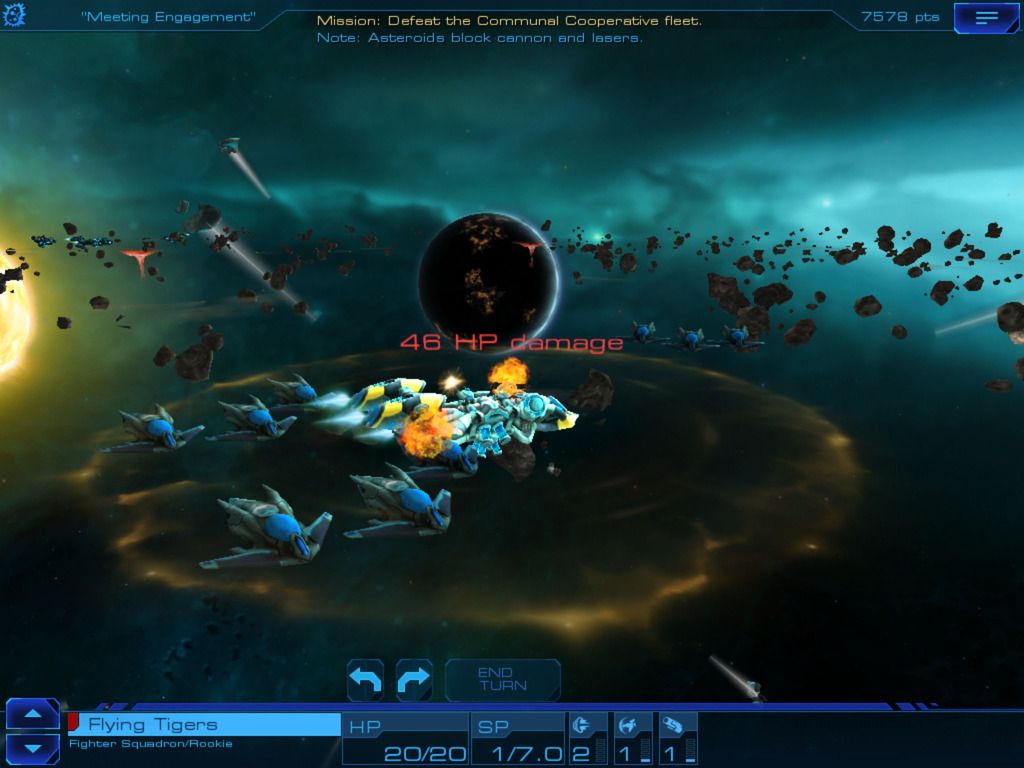
In case you were in doubt, the game helpfully writes ‘boom’ on the screen for you, to show you scored a hit
Other game elements standard for empire building space games are present, but offer nothing really new.
TRADING
Every planet has a marketplace and the principle seems pretty simple. Sell if you like the price – sell a lot and you depress the price for next time. Energy is used to upgrade your ships, metals are used for building on planets, science for researching tech, and food for growing population.
Spending credits on science is a good choice. Focus on the power of your weapons and defences for quicker victory.
However I found you can completely ignore trading as you easily earn enough from missions to upgrade your fleet and win the game.
BATTLE CARDS
You win these on missions, and they can usually be played once a turn, to give you added shields, weapon power, movement etc.
DIPLOMACY
This is a bit silly. If you make friends with another race, you can see all their moves and actions, whereas your enemies move unseen. That part is OK, but whether you are friend or enemy, just ask another leader to tell you all about themselves, their cities, their strategies and their fleets, and they will!
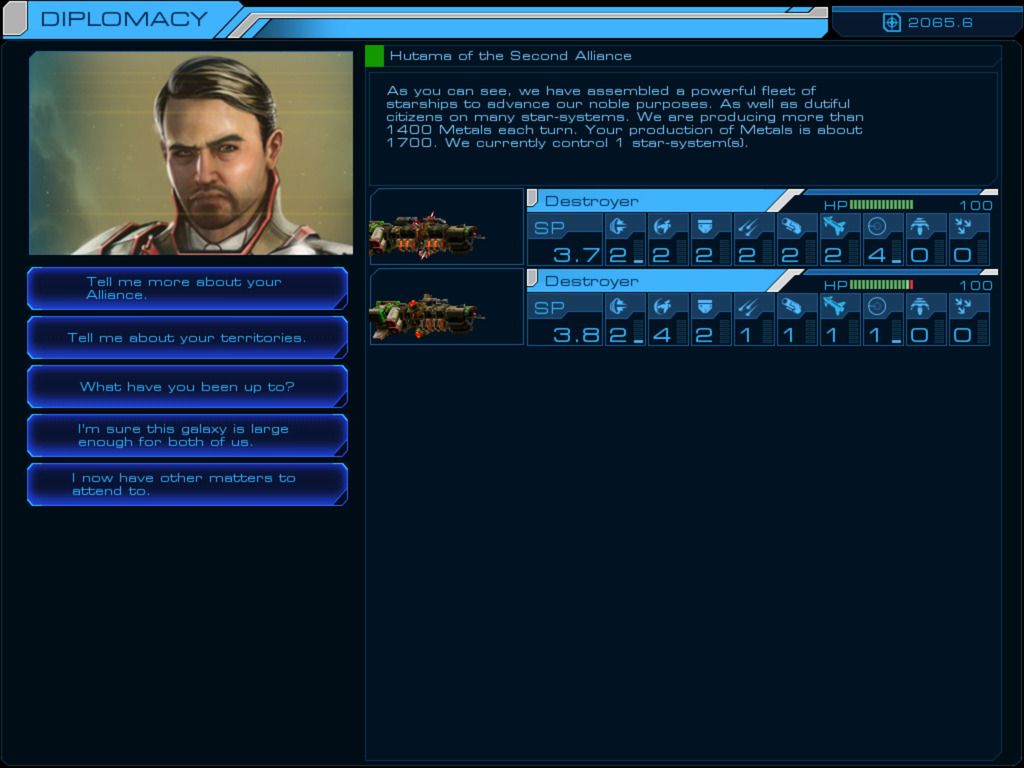
“As you can see, enemy of mine, I have assembled a pathetic fleet of no consequence – fear me!”
(Sid, Fog of War, heard of it?)
It takes several things to win a world over to you via diplomacy if you do not win it in combat – the more you visit it, the more trade you will do, and the stronger your ties. Conduct missions to help the planet, and it will give you more influence, as does docking your fleet and helping the economy that way. You can build cities and add to the planets infrastructure with various technologies the most useful of which, I found, was planetary defences to keep invaders busy until the cavalry could arrive.
Diplomacy also means the longer you are at peace with another race, the more they like you. And if you try to take over a planet that is currently friendly to them, but not yet a member of their federation, they will offer you bribes to go away.
Generally though, like trading, you can completely ignore the diplomacy dimension of the game, as it adds very very little. Which is actually quite disappointing.
SPOILER TIPS
Go down to ‘summary’ section if you don’t want to read the easy path to quick victories.
First, choose ‘all victory types’ for your challenge, and play on moderate or hard difficulty.
Build a reasonably sized empire with about 20% of the population, make peace with everyone, and let your enemies duke it out. Concentrate on building a kick butt fleet of 4+ Fast Battleships.
Strategy-wise, when one of your enemies hits 20% of the population, head straight for their homeworld, attack and capture it. If you do so on ‘moderate’ difficulty all of their other planets, technology, population, Wonders and science become yours, and usually that is enough for victory. On ‘hard’ difficulty you will have to take all their planets one by one, but if you go for the most populated planets first, it will soon starve them of the resources they need to repair their fleet.
Tactically the easy way to win most engagements is to arm each vessel in your fleet with 3-4 torpedoes. You can see the position of the enemy fleet at the start of every battle (Sid, why? You should only be able to see the enemy ships when you get into sensor range!) As soon as you engage, at long range, fire a spread of these to fan out and cover most of the routes your enemy is likely to take. The AI is not good at dodging torpedoes and usually after the first salvo or two, you have knocked out almost all their ships. There are also Wonders which make your torpedoes invisible, or make your own fleet immune to torpedoes. Most annoying of all, torpedoes can pass through asteroids (but not planets…).

Torpedo salvo away! And that’s the battle won, right there.
(Note to Sid, if you give the player uber weapons like these, then at least give the AI the ability to dodge them! You simply have to patch this game element or take torpedoes out of the armoury altogether.)
HINT: If you want to get the most out of this title, do what I did, and play ‘domination’ (last man standing) at no less than HARD difficulty, and do NOT use torpedoes. This will make the battles harder to win, and resources, when you win them, all that more important for repairing your damaged ships.
SUMMARY
If I sound a bit jaded about this title it is just because it could have been so much more. Space should mean a 3D map and combat on the X, Y and Z axes. This is just Civilisation all over again, on a starry 2D map, with 2D combat.
(And Sid, no multiplayer mate, come on!?)
But there does seem to be enough of a challenge at the ‘hard’ level to make for a diverting campaign which can fill a few hours – I figure I’ll get about 20 hours gameplay out of this title, which is OK for 15 bucks, but not great.
This title would probably work better as a ‘free to play’ game with in-app purchases. And with multiplayer battles. I could imagine coming up against planets defended by AI or human ‘bosses’ which I could only defeat either by grinding my way to better ships, or by buying something which is big and bad enough to take them on. But that would be a different game, right?
So many small tweaks would have made this game so much better: get rid of the uber torpedoes, or at least tone down their power and make them unable to pass through asteroids; make the little ‘wormholes’ more abundant and give them a penalty so that if the player or AI sends his ship into one of them, it doesn’t reappear for a couple of turns; if you are going to have trading and diplomacy in the game, it should be worth bothering with; and add some fog of war to hide the enemy fleet from the player so that you first have to find them before you can engage, adding some element of suspense – this is stuff that is really basic, and should have been obvious to the devs.
In the end Starship is a nice enough little game for a very modest price of just 15 USD, I’m just disappointed that Sid Meier took Civilisation into space, and tried to convince us Space is Flat.
SCORE: 6 out of 10.


